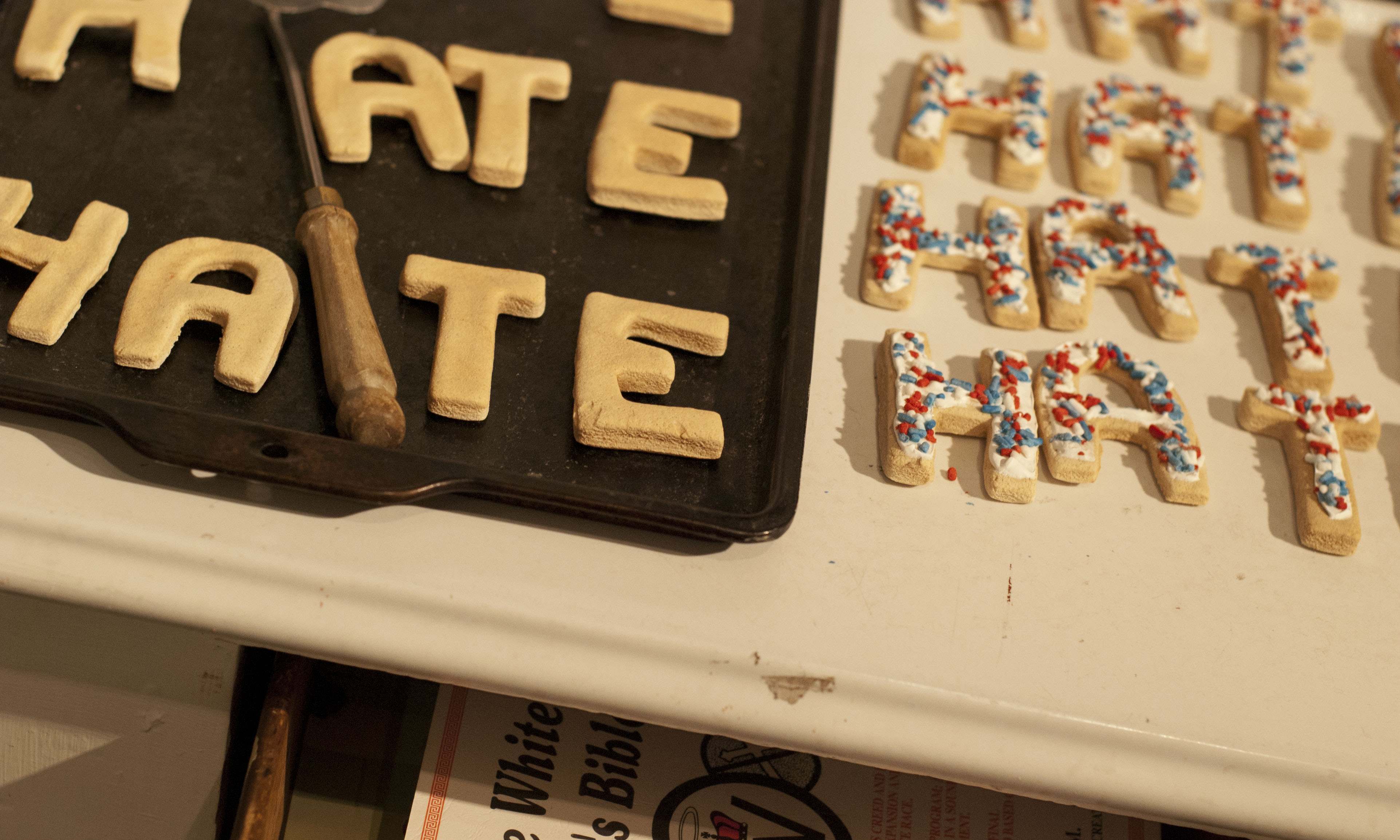
Over 4,000 copies of white supremacist literature were leaked to the Montana Human Rights Network from a hate group defector in 2003. The Network did not destroy the books. Instead, they transformed them into an art exhibit that will be in New Haven until Dec. 18.
Speaking Volumes: Transforming Hate is on display during weekdays at the Seton Art Gallery at the University of New Haven. The exhibit, which uses instruments of hate to draw attention to the egregious violence that has stemmed from racism across the world, was brought to New Haven after Laura Marsh ART ’09 heard about it from featured local artist Scott Schuldt. Marsh, who serves as director of the Seton Gallery, said the exhibit could not be more timely for Yale students, given the passionate discourse on race relations currently occurring on campus.
“Art opens up a channel of communication.” Marsh said. “These are difficult topics and when expressed creatively, there are more ways to share stories, commiserate, bond and connect.”
The 39 artists featured in the exhibition were given copies of novels and asked to use them to represent a moment in history to which they wished to respond, Marsh said. While some artists merely drew inspiration from the books, others physically incorporated them into their pieces.
Marsh said one of her favorite pieces is “The Cooling Table,” a display that consists of a seemingly innocuous white kitchen table with red, white and blue sugar cookies sitting on a baking tray. The cookies spell out the word, “hate,” six times, as “The White Man’s Bible,” — an original copy of a hate novel — peeks out of the drawer underneath. A spatula is placed next to the baking tray.
“For me, what this piece really represents is the idea that hate begins at home. We all grow up in various ways and different cultures but hate is often so deep-seated it can look like love,” Marsh said.
Schuldt applied to submit a piece to the exhibit after learning about it online. He sewed a beaded tapestry to commemorate the death of Laura Nelson, who was abducted by white mobs and hung from a bridge alongside her 15-year-old son in 1911. The town photographer took a photo that was later used in postcards.
Schuldt said that though he researched many lynching images, he chose Nelson’s because her body still looked human. Most lynching victims were too badly burned and beaten to be recognizable human, he said.
Nelson said the hatred that spurred such attacks is still present today.
“This show opened in 2008, and I remember feeling that things were getting better, things were coming out into the open,” he said. “Now what’s happened is, our one political party of stupidity, their number one candidate right now openly shows hatred towards other people. This was supposed to be getting better.”
Students interviewed at the exhibition expressed strong emotional reactions to the art.
Rachel Lodi, a sophomore at the University of New Haven, said she was shocked and “offended” at first when she saw symbols of hate, including swastikas, featured so prominently in the art pieces. But, she said after thinking carefully about the exhibit and discussing it with friends, she realized the use of the images was intentionally subversive and meant to be a tool to critique racism.
University of New Haven junior Jenny Francois said she was particularly taken aback by the broad range of hatred the exhibit exposed.
“I think being in here kind of makes you cringe,” Francois said. “It doesn’t matter who you are, where you come from, hate can come from anywhere.”
The exhibit first opened at the Holter Museum in Helena, Montana. Its next stop is New York.
Interested in getting more news about New Haven? Join our newsletter!







